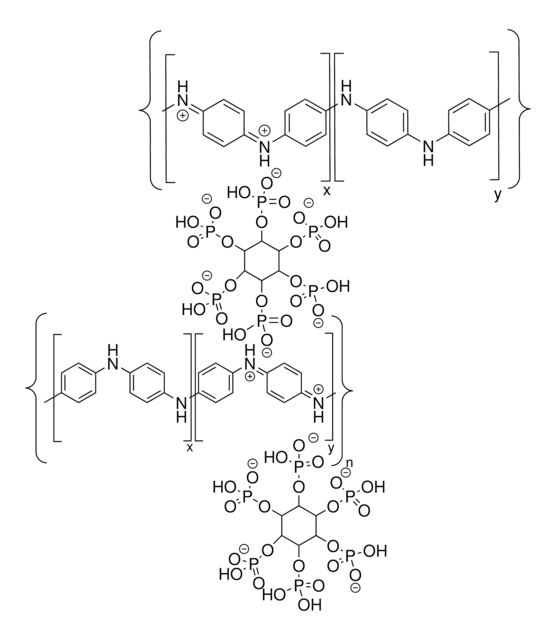912409
High-performance silicon anode
1 micron silicon particles in crosslinked conducting polyanaline matrix
Synonim(y):
Doped polyaniline, Si encapsulated in 3D crosslinked polyaniline, Si/PANi composite, Silicon micron particle
About This Item
Polecane produkty
Poziom jakości
Postać
solid
Szukasz podobnych produktów? Odwiedź Przewodnik dotyczący porównywania produktów
Zastosowanie
This silicon/PANi composite utilizes a doped, intrinsically conductive, 3D cross-linked polyaniline as matrix, which could function as both the conductive binder and the polymer electrolyte for silicon-based electrodes. Previous study for a similar silicon-based three-dimensional conducting polymer composite demonstrated increased electrochemically performance due to short diffusion paths and good 3D connectivity, and resulted in a marked improvement in cyclability, with over 90% capacity retention after 5,000 cycles.
This composite is made by encapsulating silicon particles in an in-situ polymerized 3D-crosslinked conductive polyaniline framework. This Si/PANi composite not only allows fast electrical and ionic transport, but also provides free space to allow giant volume expansion. This Si/PANi composite provides a ready-to-use electrochemically active silicon composite that would increase the capacity of conventional lithium ion battery, and improve the cycle-life of Si-based anodes.
Kod klasy składowania
11 - Combustible Solids
Klasa zagrożenia wodnego (WGK)
WGK 3
Temperatura zapłonu (°F)
Not applicable
Temperatura zapłonu (°C)
Not applicable
Certyfikaty analizy (CoA)
Poszukaj Certyfikaty analizy (CoA), wpisując numer partii/serii produktów. Numery serii i partii można znaleźć na etykiecie produktu po słowach „seria” lub „partia”.
Masz już ten produkt?
Dokumenty związane z niedawno zakupionymi produktami zostały zamieszczone w Bibliotece dokumentów.
Produkty
Recent demand for electric and hybrid vehicles, coupled with a reduction in prices, has caused lithium-ion batteries (LIBs) to become an increasingly popular form of rechargeable battery technology.
Niedawny popyt na pojazdy elektryczne i hybrydowe, w połączeniu z obniżką cen, spowodował, że akumulatory litowo-jonowe (LIB) stały się coraz bardziej popularną formą technologii akumulatorów.
Nasz zespół naukowców ma doświadczenie we wszystkich obszarach badań, w tym w naukach przyrodniczych, materiałoznawstwie, syntezie chemicznej, chromatografii, analityce i wielu innych dziedzinach.
Skontaktuj się z zespołem ds. pomocy technicznej






